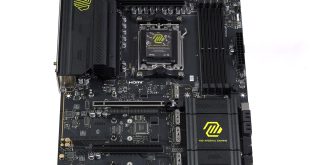A 25mm-thick ring of soft, impact-absorbing material circles the outside perimeter of the 90mm earpads. Accidental bumps and blows will be made less painful by the material's ability to temporarily deform upon impact.
Comfort is certainly exhibited by the large and soft 90mm-diameter earpads – even gamers with sizeable ears won't have complaints when using the Ceres-400 for extended periods of time. The earpads' noise-isolating abilities are very basic. Low-level noise clutter such as a system's fans was isolated, but slightly louder noises such as the rain hitting a window or a house's central heating pipes were far from secluded.
Simply increasing the audio volume is a straightforward workaround to compensate for the average noise-isolating performance – not a bad compromise.
An approximately 8mm-thick piece of fabric-covered foam padding provides a layer between a user's head and the tough plastic frame. While the idea is fundamentally sound, the implementation was less than acceptable; after a short period time, the sticky tape connecting the foam and plastic frame became exposed causing strands of hair to be pulled out of one's head and stick to the headset, upon removal.
This is an irritating and basic mistake that would usually be associated with a poorly designed, bargain basement, sub-£10 headset, NOT a £35 model from one of the industry's most well-respected manufacturers. Our advice to buyers: firmly press on the foam to ensure a good contact between the sticky tape and material, repeating when necessary (every few days of usage). Our advice to CM Storm: resolve this basic issue.
Just over 40mm of size-adjustment flexibility is offered by each ear cone – enough to provide a user-definable level of comfort and tightness. The saw-toothed pattern allows the ear cones to be adjusted in incremental steps and then held in the desired location, rather than accidentally slip around during usage.
With the Ceres-400 being advertised as affordable and targeting a segment of the market where good price vs performance is crucial, we decided to conduct testing using the on-board Realtek ALC892 HD Audio codec of our Asus P8Z77-V motherboard. Users looking to purchase a sub-£40 headset are unlikely to be using the latest and greatest in add-on audio technology.
The variety and quality of tones produced by CM Storm's Ceres-400 is impressive. We listened to a diverse set of R&B, hip-hop, rap, pop and rock tracks and were pleasantly surprised by the Ceres-400's ability to provide an enjoyable listening experience with such a varied work load.
Throughout music testing, the good levels of bass shone through; the same can be said about treble.
One thing that really impressed us with the Ceres-400 was the headset's ability to produce a variety of acoustic outputs, simultaneously, without blending the tones and making them sound unreal and indistinguishable. A good example of this was listening to Tinie Tempah's 2010 hit single – ‘Pass Out'.
The diverse effects were well-portrayed by the CM Storm Ceres-400 and at no point was the artist's voice washed-out by over-enthusiastic, special-effect-biased headset settings.
We were quickly immersed in Battlefield 3's well-coordinated, war-like sound environment. Our team-mates' voices were easy to distinguish from the ever-present, thunderous-booms of vehicles being destroyed, explosive weapons being utilised and the after-burners of a circling attack aircraft. Yet again, the deep bass and potent ability to accurately reproduce special-effects tones made the Ceres-400 a joy to use in Battlefield 3's virtual war-zone.
Engaging in multiple Skype calls didn't uncover any issues in regards to the Ceres-400's ability to transmit our caller's speech. We did uncover a number of weaknesses relating to the microphone, though.
Firstly, the microphone arm's out-of-proportion dimensions made it difficult to position the receiver close to the mouth. Add this to the somewhat non-existent arm flexibility and users will have to submit to the fact that the microphone's receiver is going to lie approximately 3 inches to the left side of one's mouth and behind the lips, dependent upon an individual's size. On its own, this is nothing to worry about, but factor in the poor reception that we experienced with the microphone unit and this soon becomes an issue.
Our Skype call recipients were actually able to hear us more clearly through the very basic microphone built into HP's HD-2200 webcam that was positioned a foot away from our mouth – not 3 inches as in the Ceres-400's case. This is likely due to the fact that our speech was being directed straight towards the webcam's microphone, as opposed to travelling past the Ceres-400's receiver without being picked-up on the way.
Again, this boils down to the microphone's limited positioning around one's mouth area.
 KitGuru KitGuru.net – Tech News | Hardware News | Hardware Reviews | IOS | Mobile | Gaming | Graphics Cards
KitGuru KitGuru.net – Tech News | Hardware News | Hardware Reviews | IOS | Mobile | Gaming | Graphics Cards







I think thats a very stylish looking headset for the price. shame about the glue problem, but maybe that was an early review sample problem?
The corsair HS1A seems better value IMO
Davis, I hope it’s a problem related with early review samples ONLY. Whether this is the case or not, it shows the potential for such problems to occur again in the future, therefore requiring some form of attention by CM Storm.